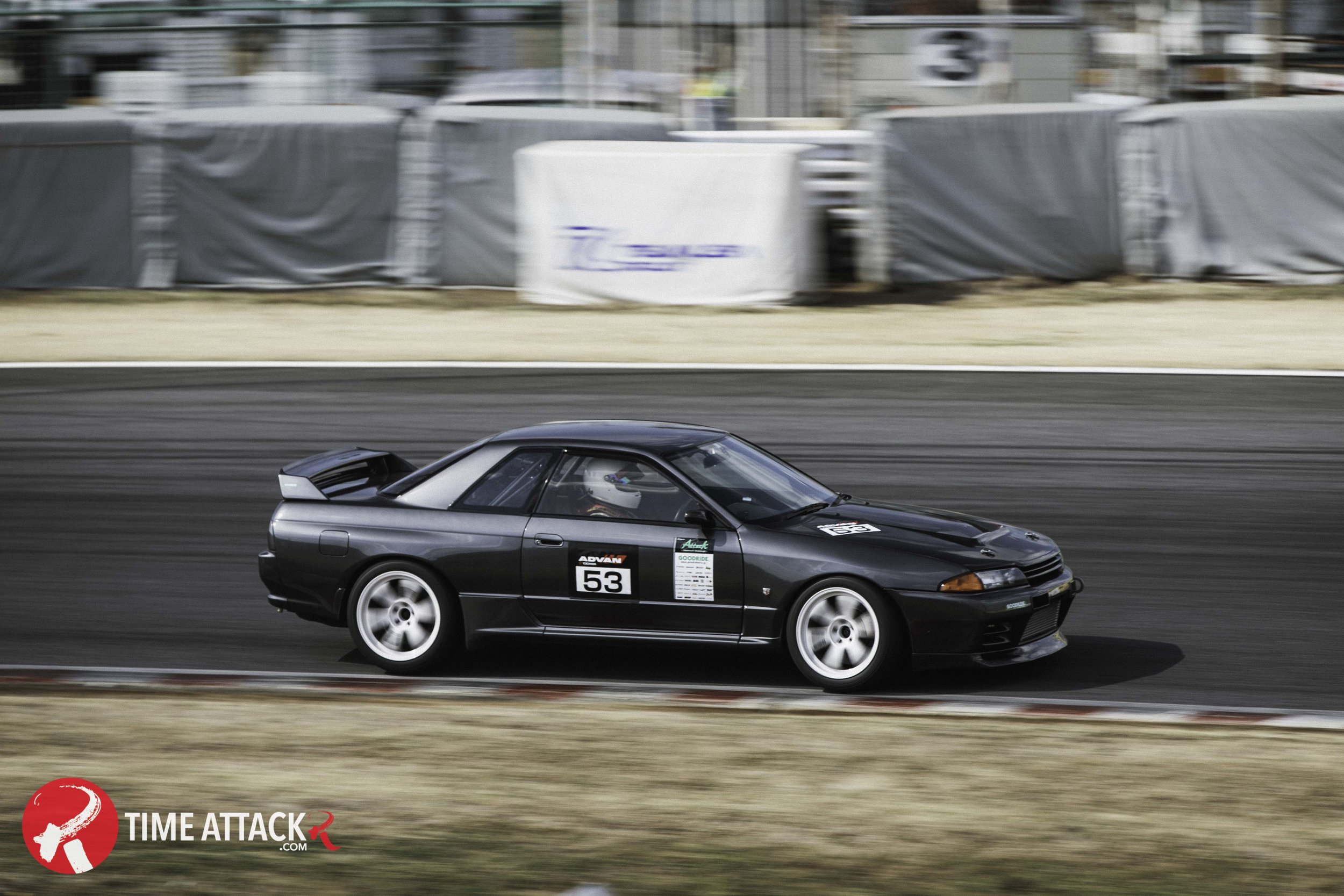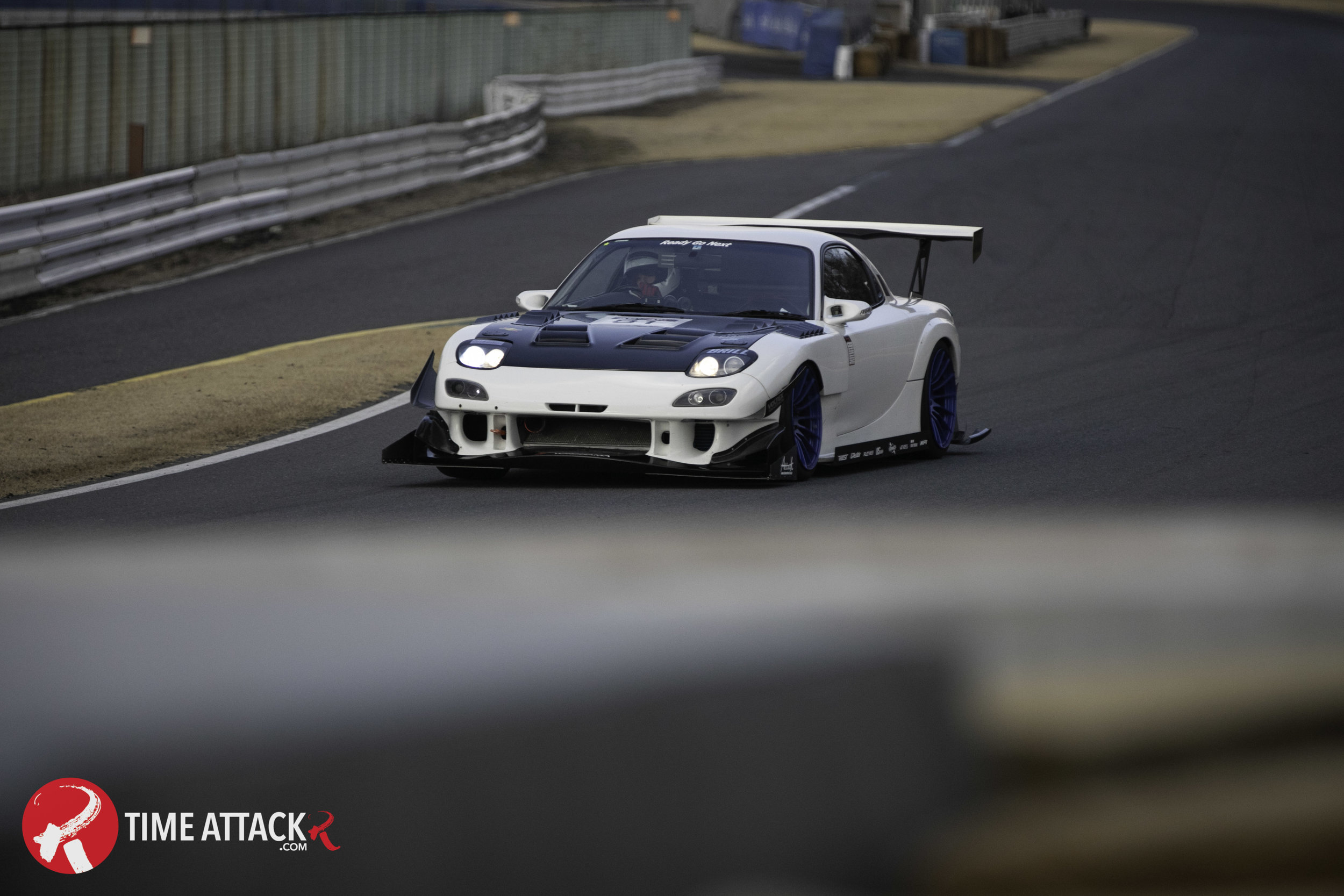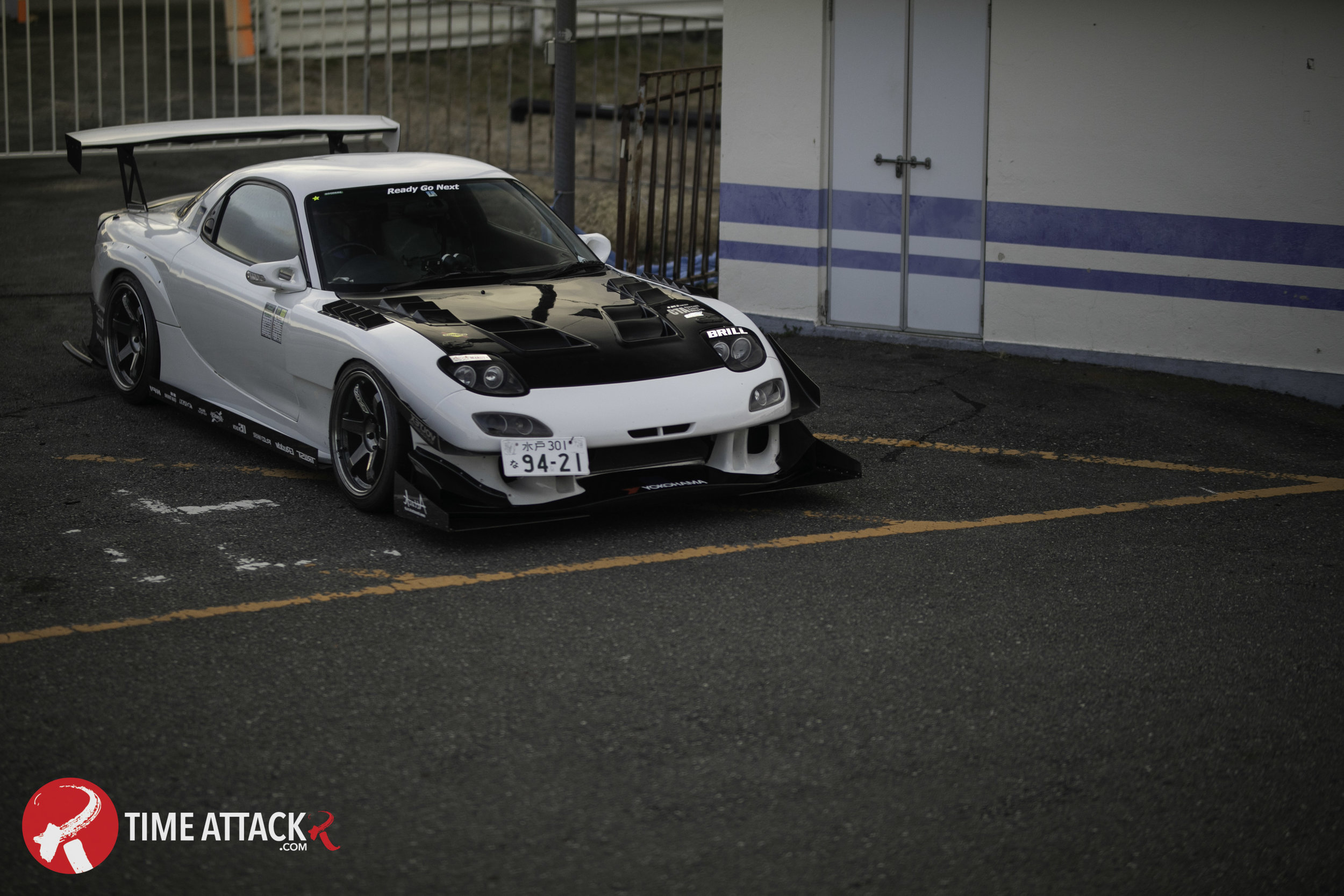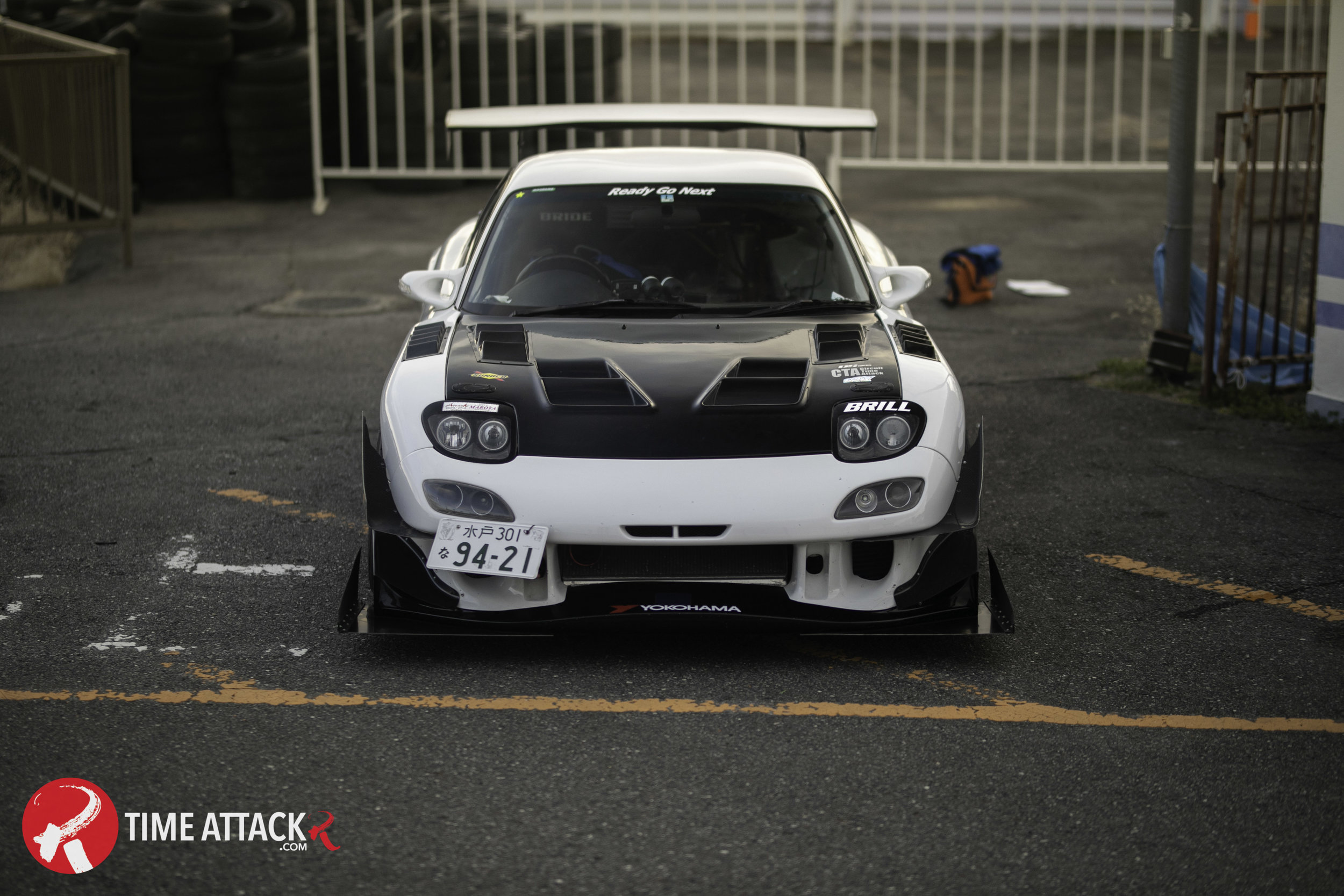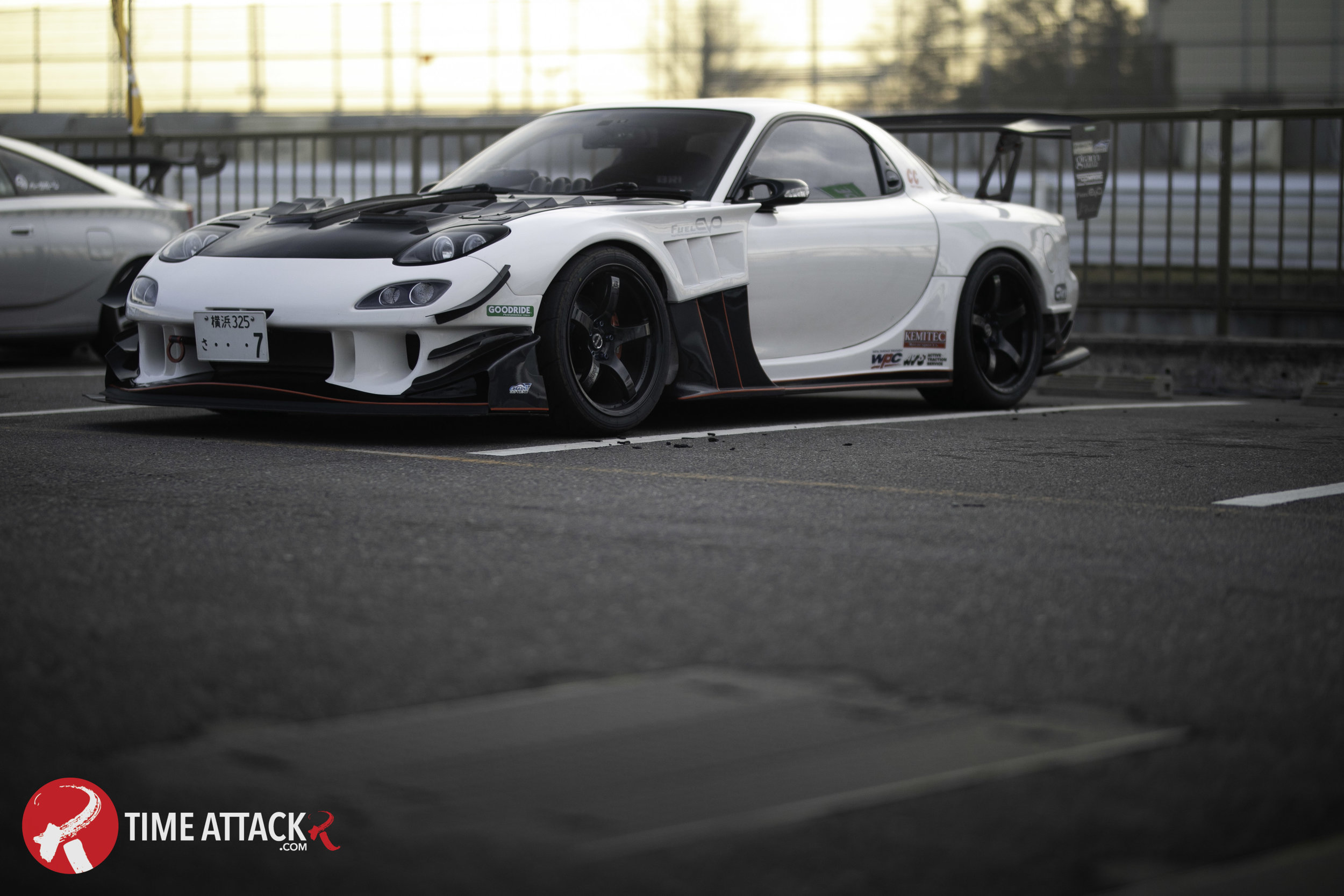“After the Attack 2019 test day, we didn’t think Tsukuba could get any better — rookies! Of course it would get better. I have never seen so many drool-worthy machines in my entire life in one place…Attack 2019; the holy grail of time attack”
This time, pulling into Tsukuba circuit with a bunch of Admix-built 700hp-plus monster GT-Rs in tow was something I had done before. Very recently, but, it was an experience I had encountered and soaked up every essence of just the day before. I thought, for a brief moment pulling into the famed Japanese circuit, that being overwhelmed by the sheer sight of Attack would have worn off during the test day, which, at the time seemed like a large number of vehicles and spectators.
Oh, boy — I was wrong. The car park at the time of our early arrival was almost full, trucks, trailers, and race cars abundant. Oh, my poor heart, pounding out of my chest. How was I to handle the infield? Or, was it the already consumed duo of warm canned coffees causing my heart to race?
After being instructed to park up outside the circuit, we made our way through the tunnel that smashes its way into the infield pit-bay area. Compared with the day before, this area was now a hive of activity, with drivers and teams rubbing the sleep out of their eyes while backing trucks, rolling tool boxes, tyres and other key race-day essentials.
After being handed our media vests, it was now go time. For some reason, I thought a large percentage of the competitors at Attack would have tested the day before, but so it turns out, numbers had now multiplied by a factor of ten as teams and drivers from far away prefectures made their long journeys to compete.
Again, the variety hit me with full force. This time, Skyline GTS-Ts (no, not GT-Rs for a change!), Silvias, Civics, RX-7s and much more were already unloaded and their allocated spaces. Drivers, as though on auto pilot checked over their machines, fitted tyre warmers, and torqued wheel nuts in preparation for the fight to come.
With a couple of hours until the racing would kick off, we made our way around the pit area to check out the new talent. With a seemingly endless supply of highly-modified Japanese tin, it seems like an impossible task, but a plan was hatched and we systematically approached our game, shooting anything in sight.
With no experience photographing Tsukuba, I prioritised each corner as to what shots I wanted to achieve. I know I had to get a shot of Seyamax diving into turn one, so that was where we began, as did a bunch of others. What I was surprised about on Tsukuba’s turn one was the angle in which it was attacked.
It appears to be a really late dive, uphill, then a roll around turn one until the late apex is found, around about when the power is applied. The sheer disbelief as to what these high-level cars can do has to be seen in real life.
With only a handful of sessions on throughout the day, we made sure we were keeping a close look at the time. With enough time for a second pit wander, we made our way through the masses of people that had populated the infield. Nob’ Tanaguchi was hosting a talk, GT cars were on display and there was an array of food stalls, where we did indulge in our fair share of hot dogs to keep warm.
Pushing through with bellies full, we made the quick walk around to the famous 80R Tsukuba corner. An interesting location for cars to set up camp, we noticed something we don’t see back home in New Zealand. Makita planers were being used to bed in, or rough up the tread on brand new Yokohama A050 semi-slicks — crazy!
Wanting to soak in as much atmosphere as possible during our time at Tsukuba, we saw it fit to check out a few grand stands and capture photos the same way as the spectators see them. No tricky angles, no hiding behind bushes, just the angles in which these corners were meant to be photographed. From height, and with the right amount of proximity.
There’s something so unique about the engine bays in Japan. It’s definitely function over form with these machines. Trust T-88s are still being used, too. Something I found most interesting. After a lengthy discussion with Mitsuhara of Admix Racing Service as to why the T-88 is still being used on every big power build he does, it’s apparent that they’re being used because it’s easy. They make the power, the supplier is local and the turbocharger is a symbol of power in Japan. As much as I love the older T-88 turbo for nostalgic reasons, I don’t see the reason in using a very expensive HKS V-Cam system, or nitrous to give the engine more mid-range, where something like a BorgWarner EFR/Garrett GTX would do this out of the box.
One car we had to have a closer look at is the Carbon Junkie Toyota AE86. Well, there’s not much AE86 left at this point, but what you’ve got is a vehicle that is much lighter and stronger than the original. Headlights? nope, they’re now stickers! The ultimate lightweight variant of an already lightweight platform.
With only one remaining session left for the day, we made our way to Tsukuba’s final turn. A fast-paced bend allowing a range of shots to happen. First off, we needed to clean our gear, check our cards, batteries and so on. Between every attack session, this guy would jump this fence and sweep the track.
Nothing on this planet can prepare you for witnessing Japan’s fastest time attack cars flying at you, in excess of 230km/h, mostly taking Tsukuba’s final turn either flat or close too. Even the mid-level cars came flying in at phenomenal speed. The speed record for the event, though? Adam Casmiri in the JDMYard Honda Civic EG with 253km/h, wiping Under Suzuki from the record books.
William Ae-Yeung pedaled the PZtuning Motorsports Honda Civic to victory at Attack, snatching the front-wheel drive record from Nob’ Tanaguchi by two-seconds, finishing the event with a best time of 53.071-seconds, proving that modern technology in the engine, gearbox and tyre department goes a long way. I think after this new record, the local Japanese folk are going to seriously reassess their setups. With clever traction control, a paddle-shifted sequential gearbox, the latest EFR9280 turbo, and Hoosier A7 DOT-rated tyres, it’s in its own realm, with World Time Attack breeding a unique demon.
Of course, the Admix Racing Service machines in attendance were getting photographed around the famed bend. The Takanori Seyama-driven R32 GT-R is hands down my favourite Japanese time attack machine. There’s no denying, it’s the staunchest looking car out on track.
After racing concluded, we took a couple of track-side profile photos, then made our way back to the pit area.
Alright, alright — you can have a photo too! Everyone is so friendly in Japan. We felt welcome at every moment, every conversation and every interaction.
With the final session done and the track closed, the walk back to the pits probably talk the longest it had all day long. Just, wow. This white Mazda RX-7 had me weak a the knees. Beautiful, yet it was competing all day and was packed up to be driven home on the streets. The ultimate all-rounder!
JUST in time for a couple of team photos with the JDMYard team. Absolute legends these guys.
It has taken me a long time to get through this content to bring you this. For that, I am sorry. As a percentage, I would say the images in here represent around 3% of what was photographed and with a decisive lack of certain cars you can almost guarantee there will be a spotlight of them this year, as I go through and edit everything from this event. Attending Attack Tsukuba has been a dream for so long. As such, I didn’t want to a general event report, but rather a report on how the day went, from our point of view, as we saw things.
Attack Tsukuba, thank you for having TimeattackR. We’ll be back to photograph it again at some stage and even possibly a few of the other circuits in the series. Keep an eye out in the upcoming months or spotlights on a bunch of top-level Tsukuba monsters. Follow us on Facebook to keep updated!










